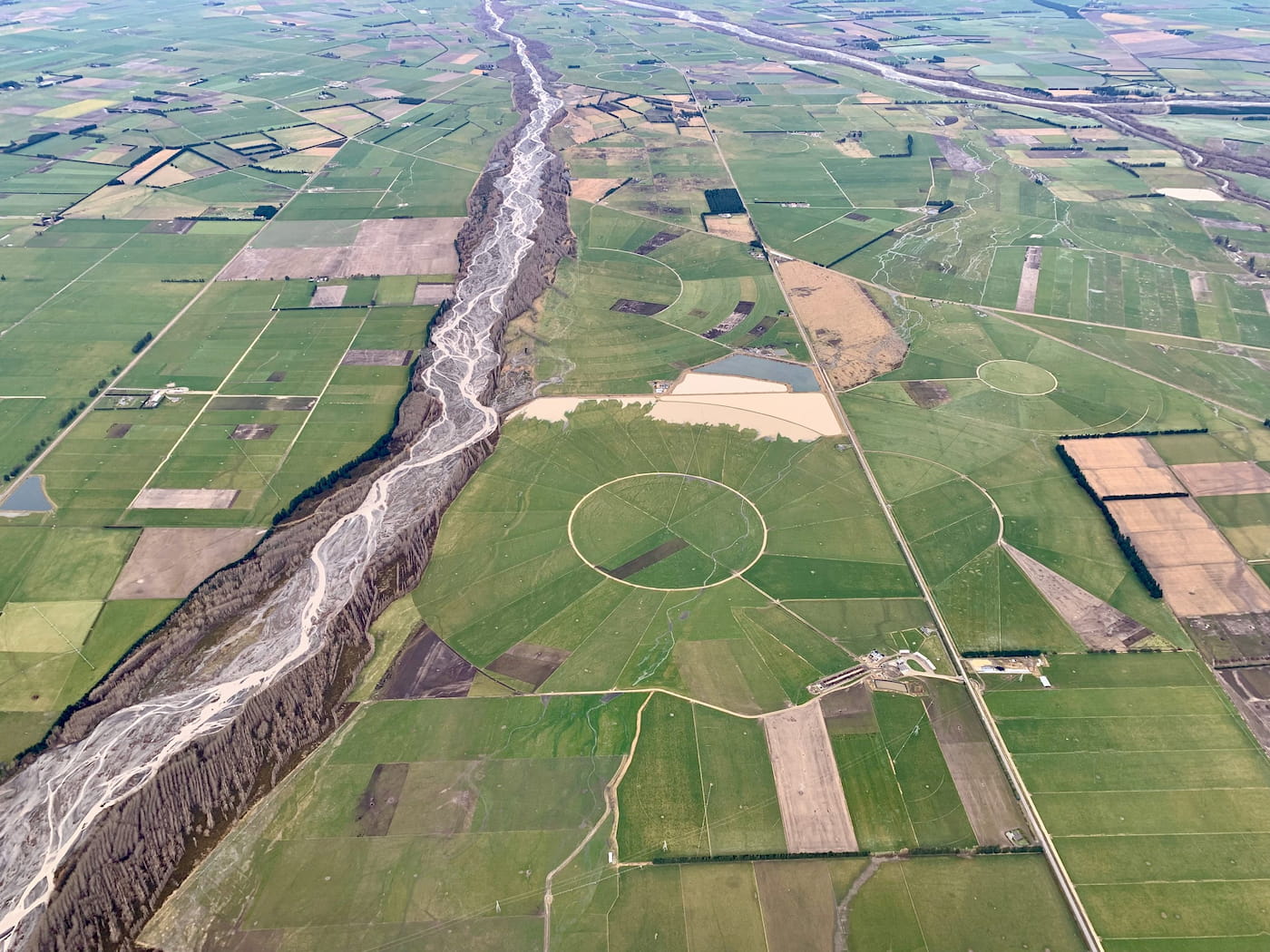The first message I sent home from New Zealand was about tap water.
Sounds weird. True story.
Having spent the previous five years drinking London water (you know, the kind of hard water that means endless scrubbing to get crusty, yellowy limescale off your appliances; that leaves floating little flakes of yuckiness on the surface of your cuppa), I just couldn’t get enough of soft, clean NZ water.
Together with the obligatory ‘I love how they say thanks to the bus driver’ and ‘why am I getting sunburned when it’s cloudy?’, it featured front and centre in my earliest observations of my new home.
In my first few months in Aotearoa, I sent back envy-inducing photos of turquoise beaches, alpine glaciers, clear blue lakes and streams you’d be rude not to swim in. I’m a terrible photographer, but I didn’t have to try. Aotearoa’s incredible scenery did all the work for me.
I love this country. How could I not? It’s like stepping into a blue and green paradise every time I open the front door. It’s obvious why New Zealanders are so proud. Few places in the world share such a stunning natural heritage.
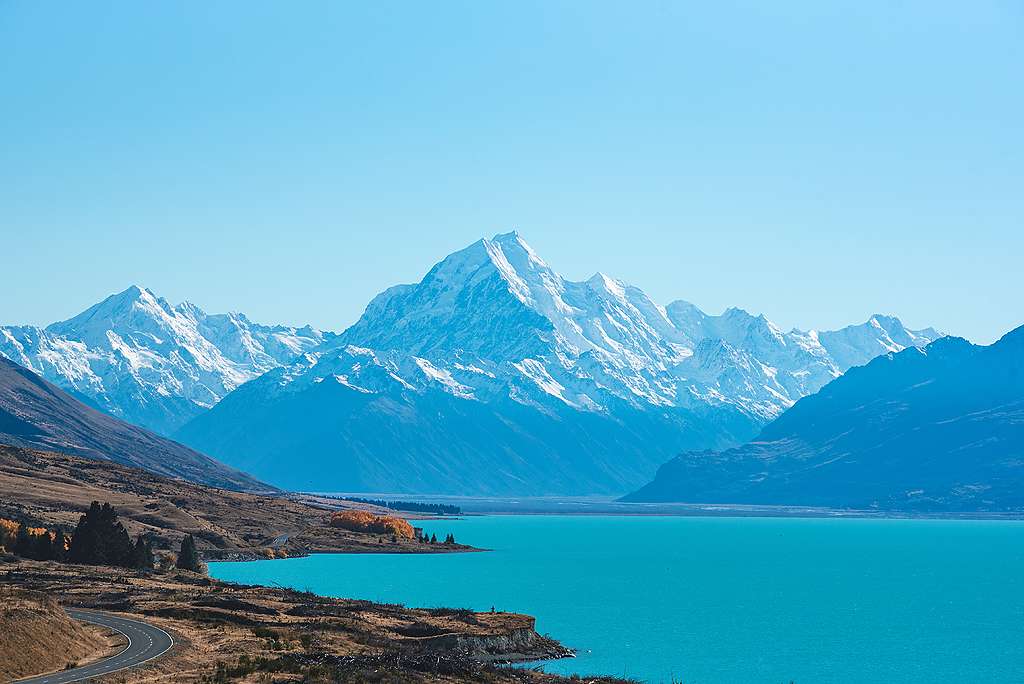
I guess that’s why it’s also not surprising that so many people are worried about the things that could end up spoiling this beautiful place.
One of my first assignments for Greenpeace was at a gathering of freshwater and climate change advocates. They were becoming more and more concerned about pollution from the dairy industry.
It’s no coincidence it was hosted in Ashburton. The amount of contaminants that make their way into the water is exceptionally high there.
The more I learned about freshwater pollution, the more I started to hear about the surprisingly high rates of gastro caused by contaminated water in New Zealand (approximately 18,000 – 34,000 cases a year).1
What happened in Havelock North was a shock. But it wasn’t the first time. There were serious outbreaks in Springston, Dunsandel and Darfield just a few years earlier – not incidentally, all in the heart of dairy country.
I also started to become very familiar with a word I’d never heard much before: nitrate.
A news report ran on TV where scientists and doctors shared their fears. Nitrate concentrations in drinking water were increasing. They could lead to chronic illnesses like cancer, they said. In fact, New Zealand has high rates of colorectal cancers and high levels of nitrate in drinking.
The same message kept coming up. There are too many cows in New Zealand. It’s contaminating rivers and drinking water. And polluted water means sick people.
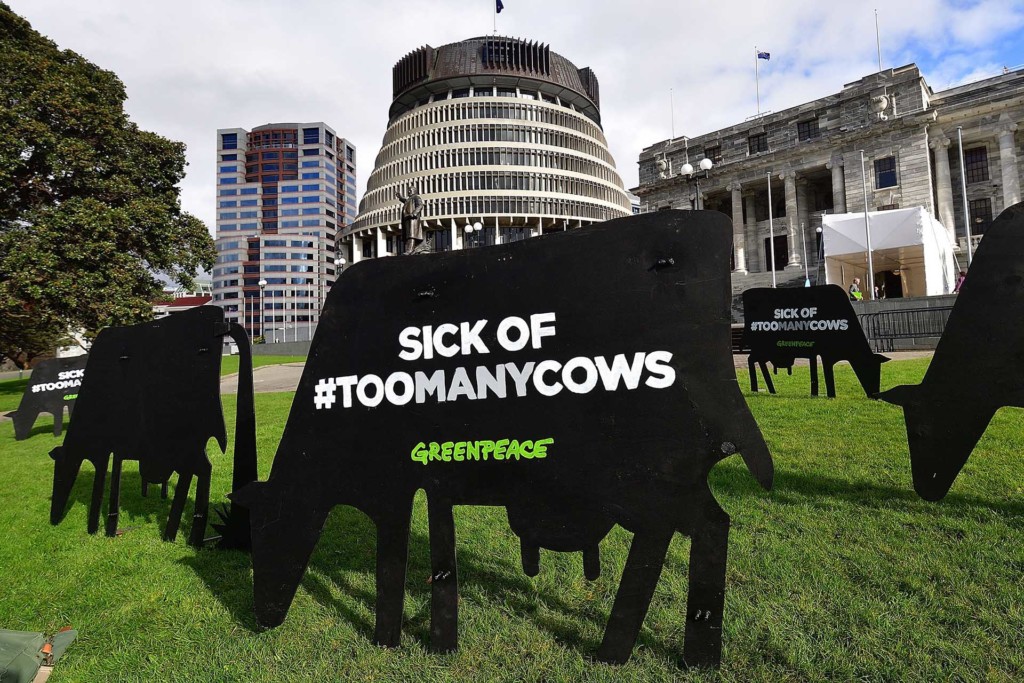
So I started digging into the research. What were the scientists saying about the health impacts of livestock farming?
I was surprised to learn that the World Health Organization has long been talking about how protecting public health goes hand-in-hand with protecting the environment. I found out that the destruction of the environment, including for livestock farming, is a major cause of new infectious diseases.
This seems to be well-established in the medical world. But it’s a message we never really hear. Certainly not from the New Zealand Government.
Doctors are starting to speak out though. Doctors, researchers and public health advocates have come out in support of the Freshwater Rescue Plan. It’s a seven-step guide for how the Government can immediately start to resolve the freshwater crisis in New Zealand.
Dr. Michael Baker, a professor of public health at Otago University who you might recognise from his regular news interviews about Covid-19, spoke at the launch. He explained that dairy intensification has been linked to a rise in cases of Shiga toxin-producing E coli, a very serious pathogen which has caused fatalities around the world. “We have by far the highest documented rate in the world of this infection,” he said. There are now around 400 cases a year, compared to virtually none 20 years ago.2
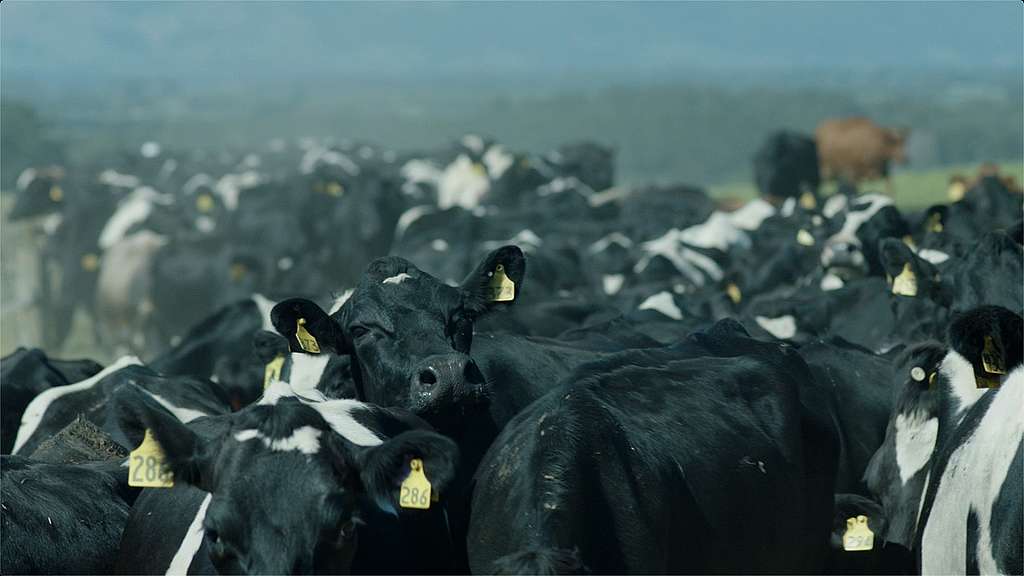
By reading up on the issue, I discovered that New Zealand has one of the highest rates of reported illness from bugs that are transmitted from animals to humans. Reported cases of cryptosporidiosis are higher in New Zealand than in Australia, the UK, Germany and the USA.3 Rates of giardiasis are also very high and increasing.4
I found out that farm animals are an important carrier of these bugs. That drinking or swimming in water contaminated by livestock waste was making people sick. That things could get worse unless we take the necessary steps to reduce livestock numbers and the amount of polluting fertilisers being put on the land.
It was surprising to learn how many people are getting sick right now. But it was even more worrying to find out that drinking water with too much nitrate in it could cause long-term illnesses like cancer.
Recently, nitrogen pollution in NZ has worsened more than in any other developed country. The number of dairy cows on the land, the nitrogen fertiliser used to grow their pasture and the litres of urine they splash across the fields are largely to blame. Especially in rocky soils like in Canterbury, the nitrate makes its way into underground aquifers – eventually into some people’s drinking water.
The science is complex and sometimes conflicting. But it’s enough for people to be concerned about the potential risks. The more we keep intensively farming livestock, the more likely it is we’ll face serious consequences for our health. And it seems to me that a responsible Government would heed these warnings. A responsible Government that has acted so boldly against Covid-19 should surely be acting now to prevent another public health crisis.
The Government took some baby steps in 2016 when they introduced a cap on synthetic nitrogen fertiliser. This only happened because thousands of regular people signed petitions and demanded a change. But the cap is still too high and we need to push the Government to be bolder.
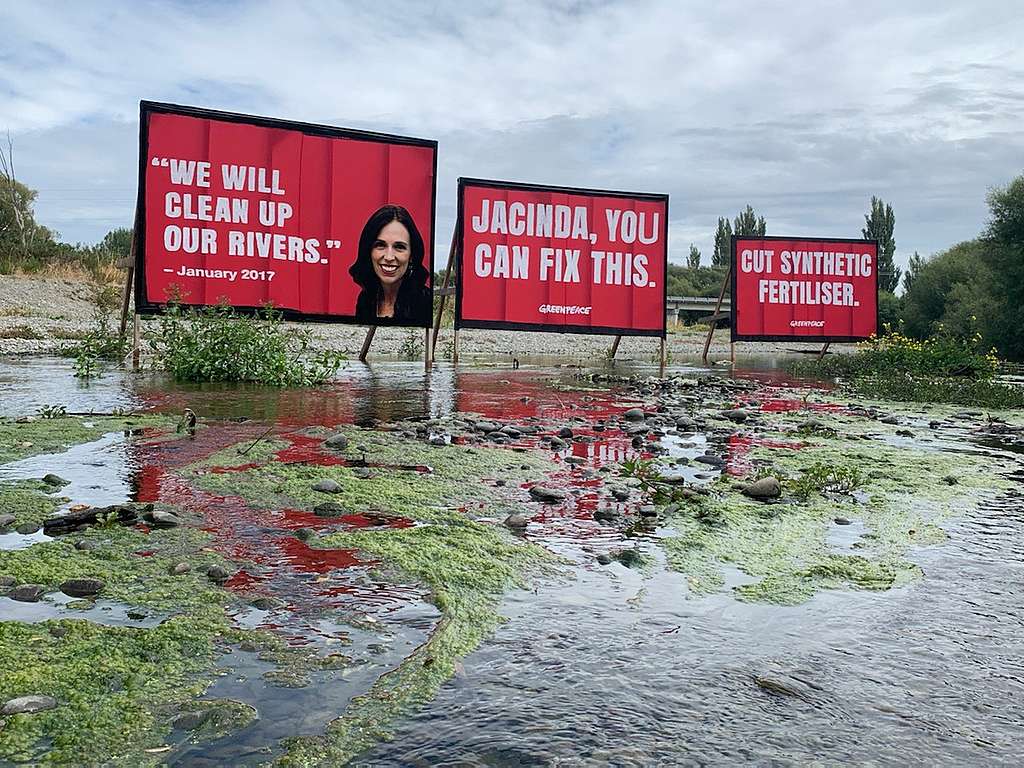
The Government needs to put people’s health first. They must commit to phasing out synthetic nitrogen fertiliser completely and to limiting the number of cows on the land. They must kick start the transition to a better way of farming that respects the land, instead of treating it like a mine. We’re calling for the Government to set up a $1 billion fund to help farmers move to regenerative agriculture.
What would this mean for New Zealanders? Imagine, it’s 2030 and in Aotearoa’s rural heartlands the land and rivers look lush and animals look healthy. There are no more big irrigators, synthetic fertiliser trucks and muddy paddocks packed tight with cows. Instead you spot just a few cattle, sheep and deer grazing under the shade of fruit, nut and timber trees. Veggies, grain and fibre crops thrive amongst the trees and animals. It almost looks more like a forest than the monocultures of pasture and pine you were used to in 2021.
Coal burning Fonterra factories have been replaced with packhouses, mills and plant-based food and fibre factories that run on clean energy from the sun and wind. Aotearoa has become the regenerative organic food basket of the world. We’ve ditched the cheap commodity milk powder and now we export high-value plant-based foods, fibres and timbers.
We’re richer for it and in more ways than one. Rivers and streams are surrounded by regenerating bush, and native fish, birds and pollinators are thriving. Aotearoa is drawing down way more climate pollution than it emits. Rivers are clean and safe for swimming in. We can rest assured that the water in our taps is healthy and risk-free.
As the World Health Organization says, “A change in perception to view the environment as an essential element of health protection, while adequately preserving it, would greatly benefit people’s health.”5
Clean water, straight out of the tap. It’s something us newer New Zealanders marvel at when we first arrive here. And something most New Zealanders probably take for granted. Let’s keep it that way.
Help us phase out the synthetic fertilisers that are making Aotearoa’s rivers and communities sick.
This article was originally posted in 2017 and has been updated.
References
1. Ball A (2006). Estimation of the burden of Water-borne disease In new zealand: Preliminary report. Wellington: Ministry of Health.
2. Radio New Zealand (2017) New coalition forms to tackle freshwater quality. Retrieved from: http://www.radionz.co.nz/news/national/332592/new-coalition-forms-to-tackle-freshwater-quality
3. Snel S, Baker M and Venugopal K (2009). The epidemiology of cryptosporidiosis in New Zealand, 1997-2006. The New Zealand Medical Journal (Online), 122(1290).
4. Winkworth C, Learmonth J, Matthaei C and Townsend C (2008). Molecular characterization of Giardia isolates from calves and humans in a region in which dairy farming has recently intensified Applied and environmental microbiology, 74(16), p. 5100-5105.
5. Prüss-Üstün, Annette, and Carlos Corvalán. “Preventing disease through healthy environments.” Geneva: World Health Organization (2006).

Sign on now to call on the New Zealand Govt to ban chemical nitrogen fertiliser.
Take Action

